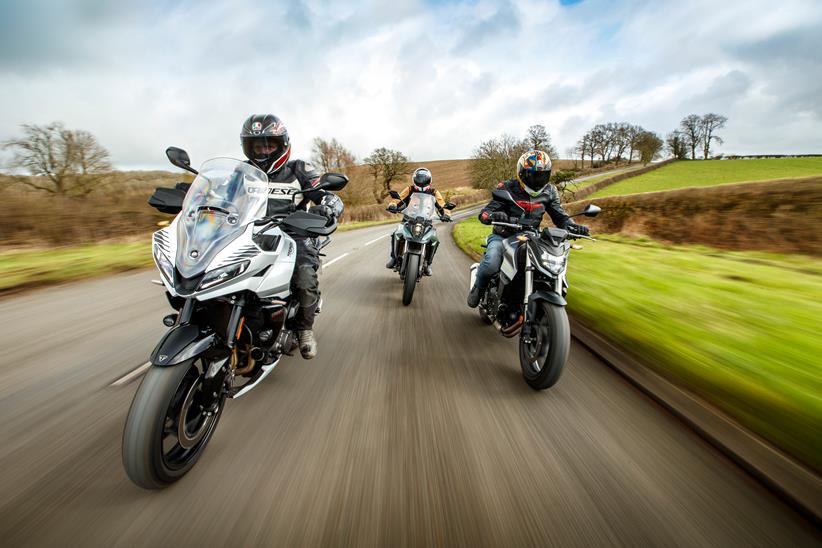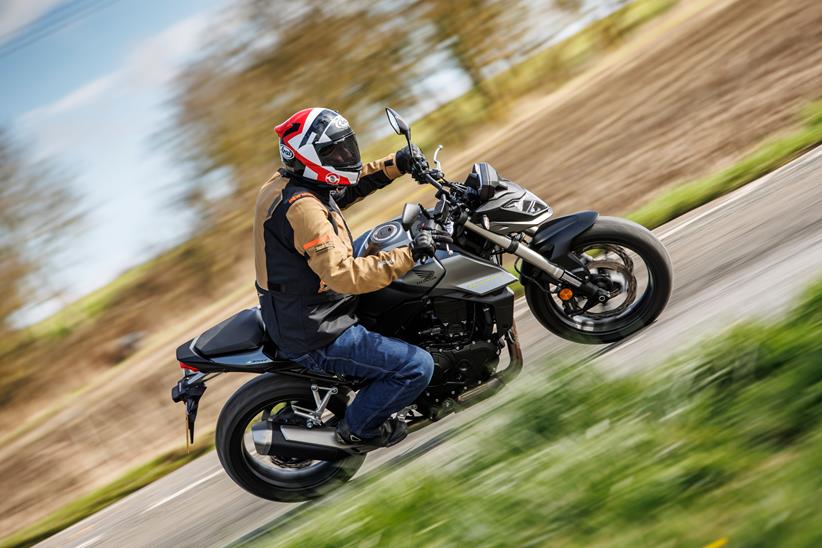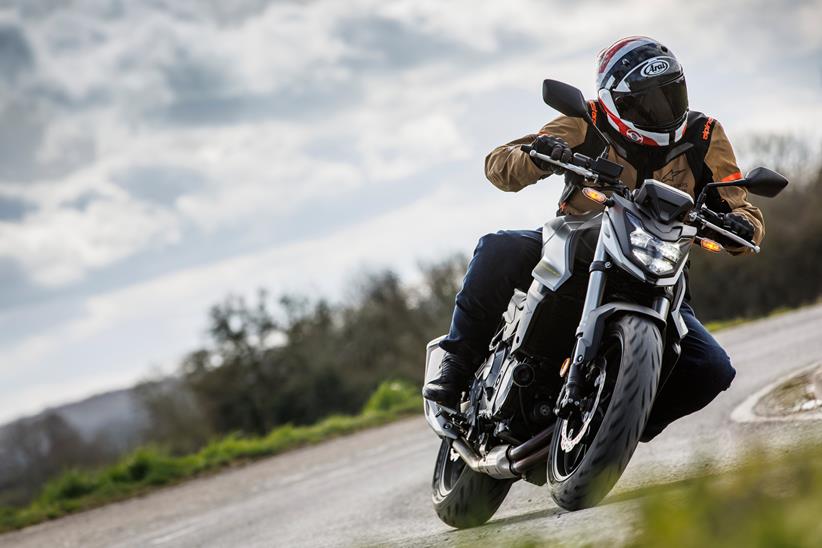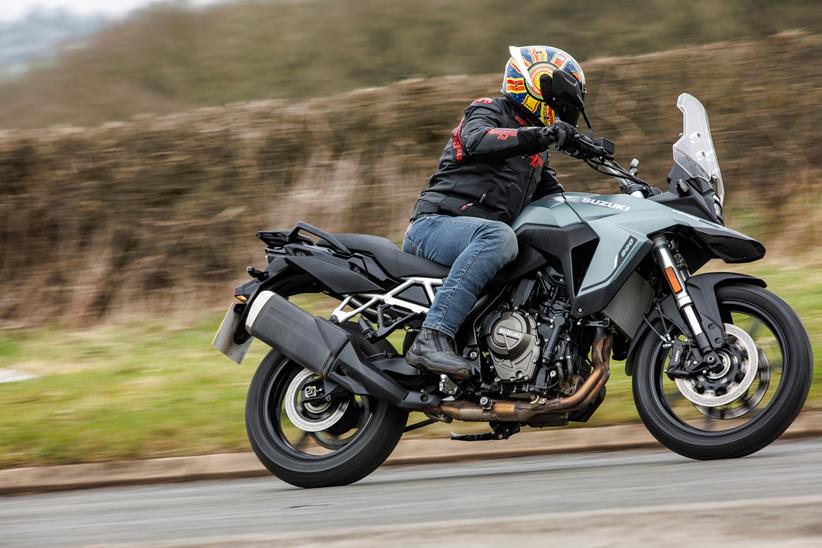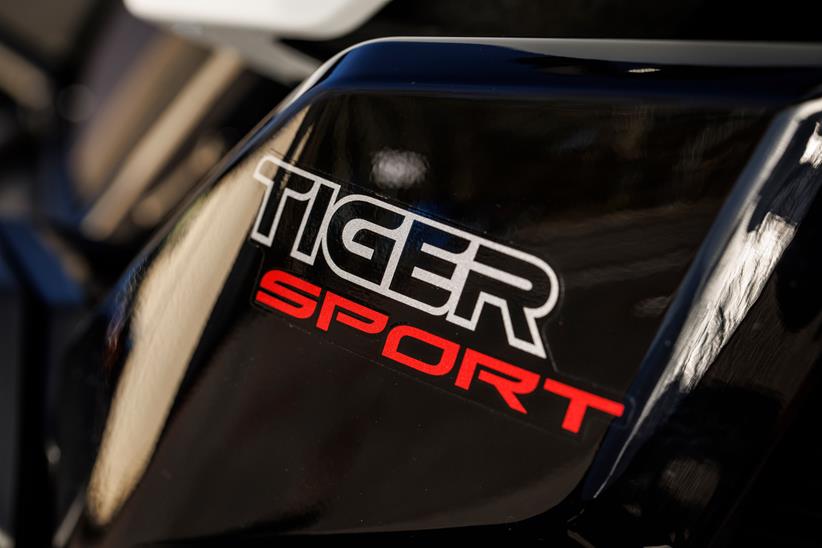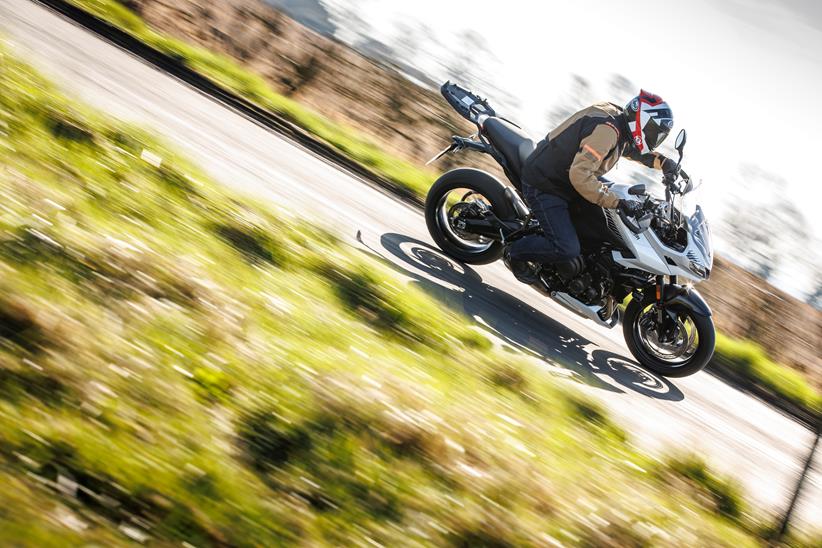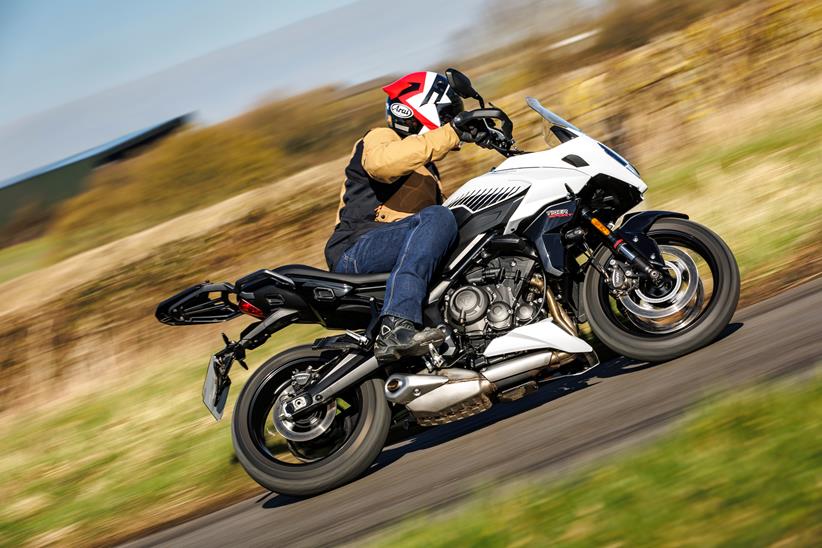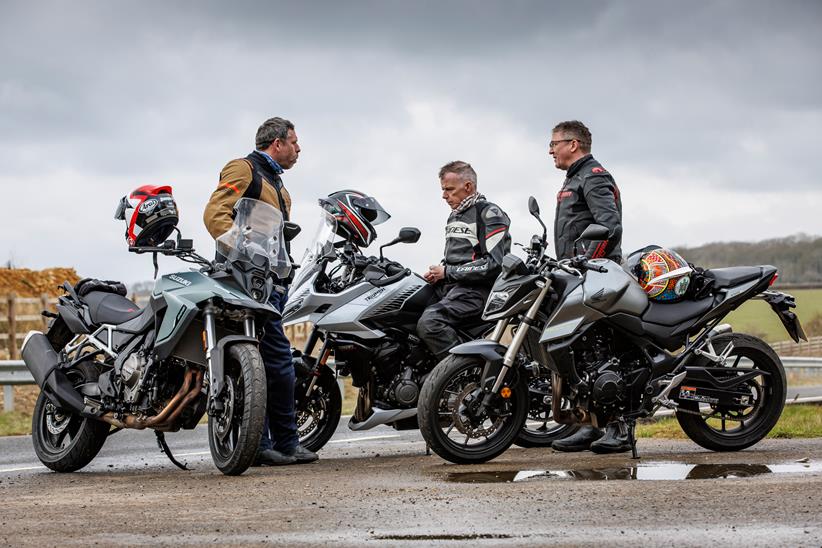The MCN test: Less than £100 a month nets you one of these brilliant middleweight PCP heroes
Imagine having a pot by your desk and every day you try to drop in three quid. Yep, just three. Wouldn’t be that hard, would it? On the way into work you could skip that posh coffee and instead get an instant when you arrive. Topping up with petrol? Don’t buy a (secret from the wife…) snack as well, instead stick that cash in the pot.
Come the weekend, not having a beer or two or a takeaway will rapidly increase the size of your stash. If after this fairly minimal cash-saving exercise you can hit £99 by the end of the month, then you could have one of these three new bikes in your garage as a reward. That’s much more exciting than a flat white or a hastily consumed doughnut.
More and more riders are making their bike buying decision based on monthly PCP finance payments. It’s easy to budget for a set monthly amount (and justify the outlay) and less of a financial risk than going all-in and buying a bike outright.
Obviously, there are pitfalls that you need to be very clear on before you sign up and PCP certainly won’t be for everyone – but for many it has opened the door to owning a brand new machine when before it wasn’t financially viable… bikes such as the three we are about to go out and enjoy some time on today.
Dive into the detail: Middleweight do-it-alls for £100 a month
Honda CB750 Hornet – £7299

- Engine 755cc liquid-cooled parallel twin SOHC 8v, 90.5bhp, 55.4lb.ft
- Frame Steel diamond
- Suspension 41mm Showa SFF-BP, non-adjustable. Monoshock, adjustable preload
- Front brake 2 x 296mm discs with Nissin four-piston radial calipers. ABS
- Rear brake 240mm disc with one-piston caliper. ABS
- Seat height 795mm
- Kerb weight 190kg
- Tank capacity 15.2 litres
- PCP deal: £98.40 a month x 36, £1350 total deposit payable, 4000 annual mileage, 9.9% APR fixed, £3847.86 optional final payment*
- Read: Full Honda CB750 Hornet review
Suzuki V-Strom 800 RE – £9699

- Engine 776cc liquid-cooled parallel twin DOHC 8v, 83.1bhp, 57.5lb.ft
- Frame Steel
- Suspension Showa SFF-BP inverted forks, adjustable preload. Monoshock, adjustable rebound and preload
- Front brake 2 x 310mm discs with four-piston radial calipers. ABS
- Rear brake 260mm disc with two-piston caliper. ABS
- Seat height 825mm
- Kerb weight 223kg
- Tank capacity 20 litres
- PCP deal: £96.64 a month x 36, £2650 total deposit payable, 4000 annual mileage, 9.9% APR fixed, £5393 optional final payment*
- Read: Full Suzuki V-Strom 800 RE review
Triumph Tiger Sport 660 – £8945

- Engine 660cc l/c inline triple DOHC 12v, 80bhp, 47.2lb.ft
- Frame Tubular steel perimeter
- Suspension 41mm inverted Showa forks, non-adjustable. Showa monoshock, remote adjustable preload
- Front brake 2 x 310mm discs with two-piston calipers. ABS
- Rear brake 255mm disc with one-piston caliper. ABS
- Seat height 835mm
- Kerb weight 206kg
- Tank capacity 17.2 litres
- PCP deal: £98.82 a month x 36, £2150 optional final payment, 4000 annual mileage, 9.9% APR fixed, £4962 optional final payment*
- Read: Triumph Tiger Sport 660 review
Hornet’s ready to sting
Costing £7299, Honda’s new CB750 Hornet is already remarkable value and getting it for £98.40 a month requires a deposit of just £1350, which is certainly within the realms of affordability. Stepping up the financial outlay is the £8945 Triumph Tiger Sport 660, which will set you back £98.82 a month after a £2150 deposit, so you need to stump up a bit more upfront.
And finally we have the most expensive bike on test, the £9699 Suzuki V-Strom 800 RE, which requires a £2650 outlay to lower its monthly payments to £96.64. When you crunch the numbers like this, even the Suzuki’s deposit feels achievable, especially if you have a machine to trade-in. But which option should you go for?
Covering a pleasingly wide spectrum of uses, we have picked the Hornet, V-Strom RE and Tiger 660 to feature in this test for good reason – they are all excellent bikes. While varied in their targeted buyer, each one stands out on its own merits and they are all firm MCN favourites. Although it has to be said, opinions are split as to which each of us would buy.

Chatting with fellow tester Bruce Dunn, before we’ve even ridden the bikes we are busy debating the Honda. It’s a bike that appeared last year and instantly announced the Hornet as once again a force to be reckoned with in the middleweight segment, and Bruce is a big fan.
“It’s my pick of the class,” he says, “I love the light weight and sporty engine – not to mention the price.”
Personally, I’m not such a devotee. I certainly get where Bruce is coming from, when you let it off the leash the Hornet’s parallel twin is brisk and its chassis feels impressively agile, but my tastes in middleweights tend to be a bit, shall we say, less demanding.

Given our budget of under £100 a month, I’d usually swing towards recommending the Triumph Street Triple R, which is pricier at £9795 but can be had for £99.58 a month after a heftier £2800 deposit. Classier-feeling than the Hornet and with extra tech, it floats my boat more (Bruce totally disagrees!) than the rev-happy Honda.
I also prefer the laid-back nature of the Yamaha MT-07’s parallel twin, which at £7510 is only fractionally more than the Honda and is £98.55 a month after a £1450 deposit, and the gruntier Suzuki GSX-8S, which is pricier at £8299 and costs £98.84 a month after a £2050 deposit.
But that’s just the tip of the iceberg in the naked middleweight class, you could also argue the case for the KTM 790 Duke (often on lower APR rates), Ducati Monster, Aprilia Tuono 660 (usually reduced in price) and a fair few more besides – all of which can be secured for less than £100 a month. It’s a vibrant segment of the two-wheeled world, which is great news for buyers. In comparison, the Tiger Sport 660 has a much easier run of it when it comes to competition.
Tiger turns sporty
When you are talking middleweight crossover bikes, the Tiger Sport’s only real direct competition comes from the £8295 Kawasaki Versys 650, which is £96.76 a month after a £2100 deposit (there are low-rate finance deals to be had on 2023 models) and arguably the £8810 Yamaha Tracer 7, which is £99.11 a month after a £2200 deposit, but is more a sports-tourer than a crossover bike. But is the aging Versys really competition for the Tiger? Not in my book, the Triumph is leagues ahead in terms of both ride quality and fun-factor.
It is very hard to ride the Tiger Sport (below) and not come away impressed. Bruce, who generally leans towards sportier options, loves the Triumph because it is much more nimble than you might expect, helped by its fairly low 206kg wet weight and sorted chassis.

“You can really throw it about in bends,” he enthuses after a ride, “yet it is also practical.”
Yep, for mile-munching the Tiger Sport is effortless thanks to an upright and roomy riding position, adjustable screen and fairly squishy seat (ours also had £118 optional extra brush guards fitted as well as other extras) – but as we have said before, cruise control should at least be an option. Although admittedly we are nit-picking here at what is overall a great bike.
But can the latest Suzuki to enter the ‘road-adventure’ class run it close? On paper the V-Strom 800 RE (Road Explorer) comes with a decent level of tech (but also not cruise control), but it can’t quite match the Triumph when it comes to sheer enjoyment.

“I like the Suzuki, it rides well and is fuss-free and hard to fault, but I don’t love it,” concludes the exactly the case with the RE compared to the DE as it holds the road better and has enhanced wind protection.
Yet when I’m riding the Suzuki I just don’t get that tingle of enjoyment like I get when I’m on the Triumph. It sounds silly but I can’t see myself taking an admiring last glance at the RE before the garage door shuts, which I would do with the Sport. To be fair, Suzuki’s muted paint schemes do the RE no favours visually but it is also slightly down to the riding experience.
Very much a traditional adventure bike in its feel, the RE delivers exactly what you’d expect: a thoroughly sorted and hassle-free ride. It has every box ticked with bags of room for both rider and pillion, good weather protection (although the screen adjustment system is a fiddle and the headlight truly terrible), a lovely motor with lots of low-end drive and a stable chassis that is more than happy when you up the pace.

So why doesn’t it pull on your heart strings like the Sport? I think it’s mainly because it is so practical it starts to feel like a workhorse, which to be fair is no bad thing at all but it does open the door for other more spirited road-targeted adventurers.
If you want a 19in front-wheeled adventure machine with a spark of character, KTM’s Chinese-built 790 Adventure delivers enjoyment as well as a £10,499 price, which works out at £98.90 a month after a £3100 deposit but deals are there to be had. Or how about the £8599 CFMoto 800MT Sport, built by the same people as the 790 Adventure and shares a lot of its tech but with a lower price that equates to £99 a month after a £2179 deposit.
If you want a bit of brand-bling, the BMW F800GS starts at £9995 (obviously this goes up as you tick the many and varied optional extras…) and works out at £99.53 a month after a deposit of £2600 while the Tiger 850 Sport is £10,095 or £99.32 a month after a £2750 deposit.

All are great alternatives to the V-Strom RE with their own pros and cons that will either make them appeal more or turn you away. And if you want to push the budget, there is also the Ducati Multistrada V2, Triumph Tiger 900 GT, Yamaha Tracer 9 and more.
When it comes to financing a purchase, the world really is your oyster – and all that stands between you and a brand new ride is a bit of cost-saving here and there to fill that monthly pot with £99. What’s stopping you?
The MCN verdict
If you can stretch to saving £99 a month, you won’t regret investing in any one of these three. Not only are they great value, they are machines that also give back far more than their budget monthly payments suggest – both in terms of performance and technology, but also sheer enjoyment. But there is one bike we’d all love to have in our garage – the Triumph Tiger Sport 660.
Blending the lightweight agility and fun-factor of the Hornet with the practicality and mile-munching skills of the V-Strom 800 RE, the Tiger manages to deliver a near faultless performance. Yes, cruise control would be a more-than-welcome addition, but if you could only have one bike, this crossover machine has every base covered.

The Hornet is the cheapest bike in the test but, despite its amazing value, there are a few other middleweight nakeds that we’d be tempted to try out for size before handing over the money to a Honda salesman. The Hornet’s good, but a rival’s character may prove more appealing to you. And to a lesser extent the same is true of the Suzuki V-Strom 800 RE, which we’d test ride alongside other road adventure bikes that offer their own unique traits.
This isn’t a slight against the Hornet or V-Strom RE, more an indication of just how strong the rivalry is in their categories and how good the Tiger Sport 660 is.
Pros:
- Ease of the V-Strom RE
- The Hornet’s low price
- Tiger 660’s fun-factor
Cons:
● Hornet’s lack of grunt
● No cruise control on the V-Strom and Tiger
PCP: What’s the deal?
There are two main forms of finance – PCP and HP. Hire Purchase (HP) is a traditional scheme where you sign up to borrow a set amount of money with a fixed interest rate over a pre-determined period of time. Once you finish paying back the monthly instalments of the loan, you own the bike outright.
Personal Contract Purchase (PCP) works in a different way. With PCP you are effectively leasing the bike for a set period of time, during which you pay off the interest on the loan and the depreciation on the bike itself. Once the term of the loan has finished (usually 36 months but most manufacturers offer anything from 24 to 49-month periods) you either pay off the final payment (also called the balloon payment), roll on to another deal or just hand the bike back to the dealer.

That means that, potentially, after paying the instalments you can be left with nothing. So why do so many pick PCP? As you are not paying off the whole value, PCP has much lower monthly payments, making expensive machines more affordable.
It also has less risk attached to it as you aren’t committing to actually buying a bike, so you don’t need to sell it afterwards.
To many riders, a monthly PCP payment becomes their ‘bike budget’ and once one policy matures, they hand the old bike in (hopefully with a bit of cash accrued on it to act as a fresh deposit) and start a new PCP deal on another model, allowing them to regularly own a brand-new bike.

While you’re here: How MCN tests bikes
Our highly experienced team of road testers grind out hundreds of miles, come rain or snow, on the UK’s pothole-ridden roads to decide which bike is best in a particular category.
Using years of riding and racing experience (on and off-road), our expert journalists are able to assess the capabilities of a machine and translate that into understandable language to help MCN’s readers make an informed buying decision. Pitching bikes against their main rivals, we aim to give a conclusive verdict on which bike is best for your needs and your budget.
Using their considerable knowledge of the motorcycling market and audience, they can put a motorcycle into context and deliver a verdict that means something to anyone considering buying a particular machine, whether it be a cutting-edge, 200bhp sportsbike, a tall adventure weapon or a low-capacity 125cc machine.
When we ride the bikes in the UK we tend to do at least one full day of riding on various different types of road and in varying conditions. Our testers will then spend another day riding the bike – with rivals – to get images and video footage for our print and online reviews.
We will also, often, weigh the bikes, speed and dyno test them to see just how accurately the manufacturer claims are in these areas to give a more empirical assessment.
Find out more about how we test bikes right here.
*These deals are indicative examples of packages available at the time of writing, but are subject to change without prior notice. Everyone’s financial circumstances are different and the availability of credit is subject to status. Terms, conditions and exclusions apply. MCN cannot recommend a deal for you specifically.
